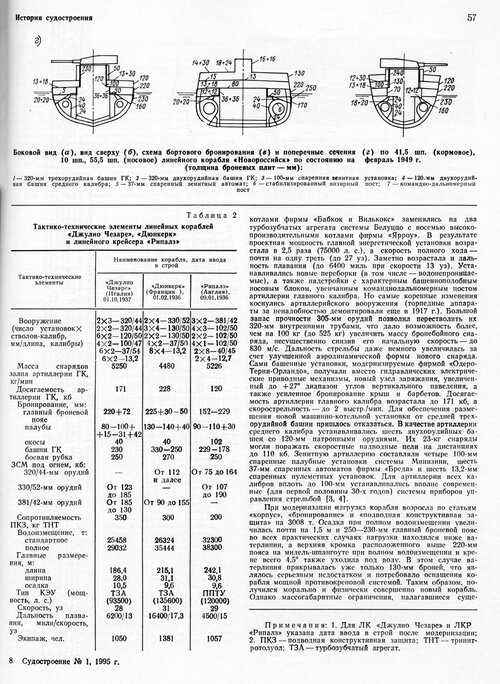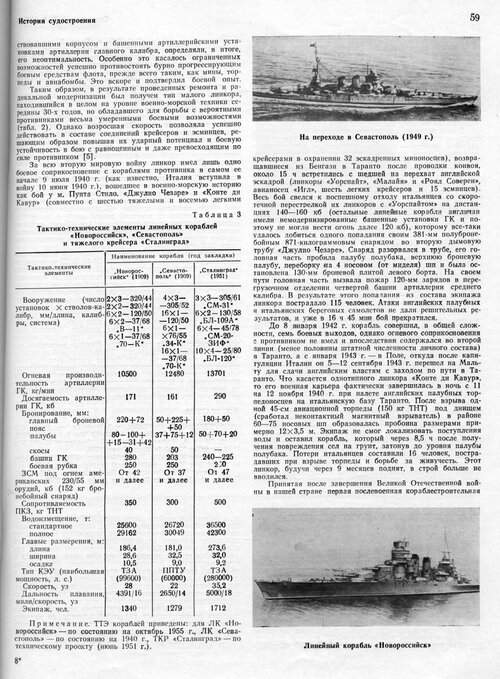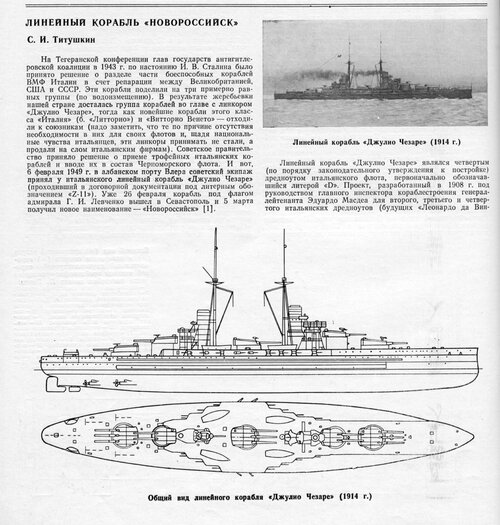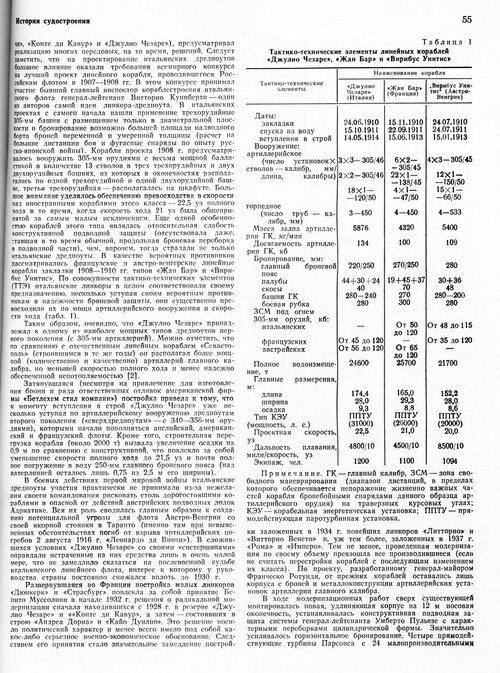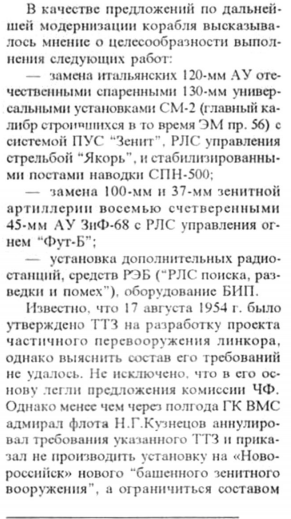According to Bagnasco & de Toro, either in their
Storia Militare 'Dossier' from last year or the recent book referenced above;
Due to the poor material condition that the ex-
Giulio Cesare,
Z 11, once commissioned into the VMF,
Novorossiysk was rather badly in need of work due to the state of disrepair she had been handed over in - she had been in a state of neglect since the end of the war, since the Italians hardly had the funds or yard space to conduct the needed maintenance on her in the years immediately after the war, and once her fate became apparent it was also hard to motivate anyone to do their job properly.
As such, from 1949 on, she had work done on her fairly frequently, including;
- 12 May to 18 June 1949
- July 1950
- 29 April to 22 June 1951
- October 1951
- June 1952
- 1953
But, after a series of machinery breakdowns, the Soviets decided to overhaul the machinery outright. The boilers were entirely overhauled, and the reduction gearing of the ships was replaced by new Karkov-types of, obviously, Soviet manufacture. Though, I'd note, this is quite different than the turbines being replaced entirely. Claimed output after this was 93,000 shp, though I have to admit I am somewhat dubious of this being an actual increase in output power, since simply replacing the reduction gearing should not have increased the output power almost a quarter (from 75,000 shp to 93,000 shp). In fact, given the figure of 93,000 shp, I suspect that the Soviets/secondary sources since then have simply reported her 'new' output as the full maximum power, rather than the more typical full normal power. Either way, her machinery would have been largely in 'near-new' condition, or about as close to that as you can reasonably get with what was by that point about 15-year-old boilers and machinery.
In this same refit, the diesel generators, non-functional by the time the ship was handed over, was replaced, and the same went for many of the auxiliary systems. The light anti-aircraft armament (Breda 37/54 and 20/65) was entirely stripped from the ship in the same refit, though how exactly they were replaced seems to be something various sources disagree on. Bagnasco & de Toro state they were replaced by twelve twin 37/67 water-cooled systems and six single air-cooled systems, though Stephen McLaughlin in his book Russian and Soviet Battleships gives six twin mountings (B-11) and six singles (70-K). The main battery fire control systems were also replaced.
This wasn't her last refit, however, and she would have to more period of work done before her loss;
- November 1954
- 13 February to 29 March 1955
As far as ship life was concerned - shortly before her loss in 1955, an examination of her hull found that it would be sound for service for another 10-15 years (so, theoretically 1965-1970). That being said, the Soviets had been hoping to use her as a training ship so that they'd have crew ready for use on the Projekt 82
Stalingrad-class 'heavy cruisers' - the first member of the class had been laid down at the end of 1951, and, due to the delays in construction, would have been launched in the spring of 1954 had it not been for Stalin's death. Stalin's death in March 1953 allowed for the navy to cancel the whole large cruiser program and allowed the re-focusing of the navy on more practical matters. In light of this, it is not clear how much longer
Novorossiysk could have reasonably been expected to survive in Soviet service - she was certainly a rather expensive method of maintaining a training ship in a navy that wasn't going to be operating anything larger than a light cruiser for a very long time, and the VMF really wasn't interested in big guns anymore.
@Kingpin6100 has a generally better knowledge of Soviet modernization plans for her than me, and might have a better idea how long they were planning on keeping her around in a post-Stalin USSR.

